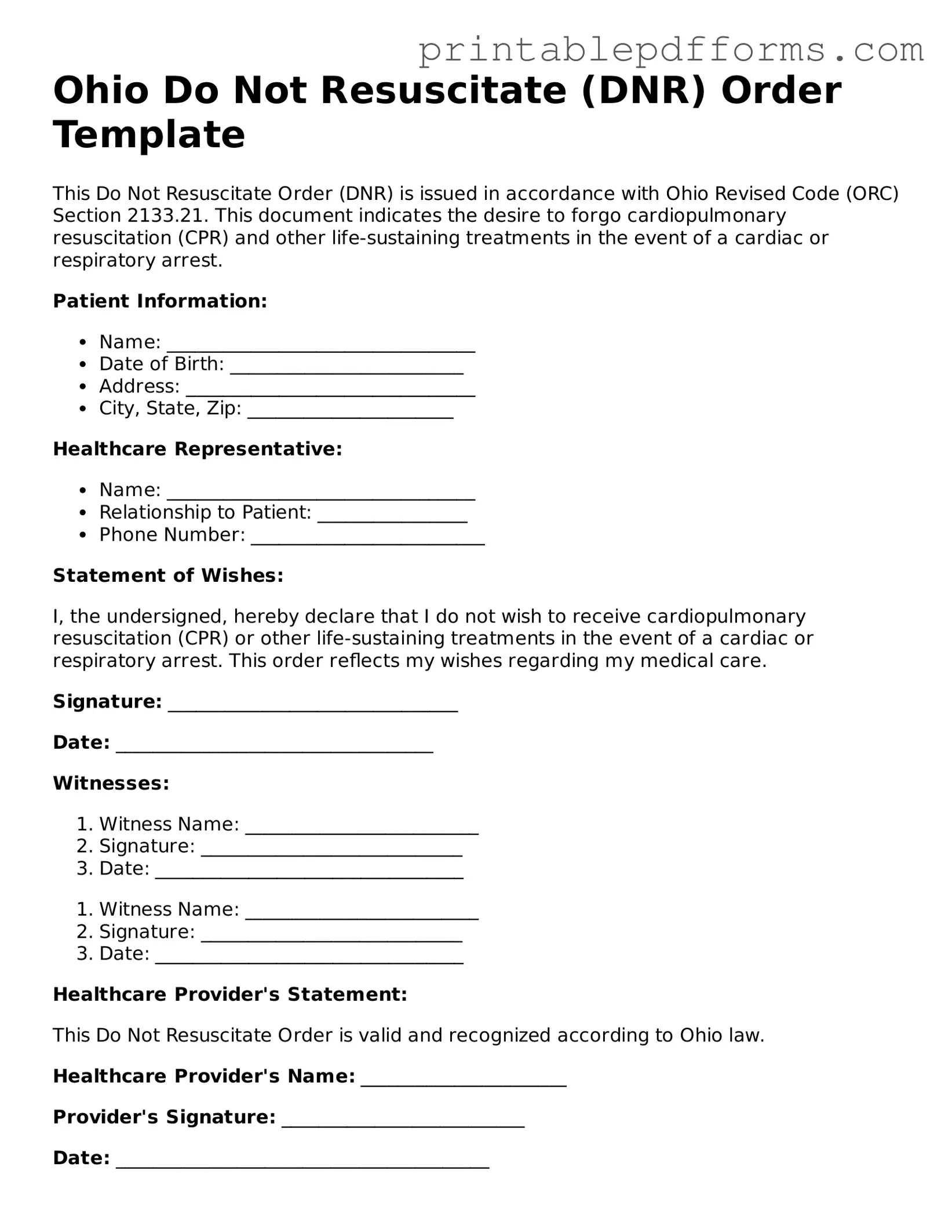Ohio Do Not Resuscitate (DNR) Order Template
This Do Not Resuscitate Order (DNR) is issued in accordance with Ohio Revised Code (ORC) Section 2133.21. This document indicates the desire to forgo cardiopulmonary resuscitation (CPR) and other life-sustaining treatments in the event of a cardiac or respiratory arrest.
Patient Information:
- Name: _________________________________
- Date of Birth: _________________________
- Address: _______________________________
- City, State, Zip: ______________________
Healthcare Representative:
- Name: _________________________________
- Relationship to Patient: ________________
- Phone Number: _________________________
Statement of Wishes:
I, the undersigned, hereby declare that I do not wish to receive cardiopulmonary resuscitation (CPR) or other life-sustaining treatments in the event of a cardiac or respiratory arrest. This order reflects my wishes regarding my medical care.
Signature: _______________________________
Date: __________________________________
Witnesses:
- Witness Name: _________________________
- Signature: ____________________________
- Date: _________________________________
- Witness Name: _________________________
- Signature: ____________________________
- Date: _________________________________
Healthcare Provider's Statement:
This Do Not Resuscitate Order is valid and recognized according to Ohio law.
Healthcare Provider's Name: ______________________
Provider's Signature: __________________________
Date: ________________________________________
